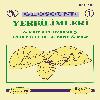Derin deniz güncel çökellerinin sedimantolojik ve jeokimyasal özelliklerine bir örnek; Kuzey Ege Denizi çukurluğu
Su derinliği denizel çökellerin taşınım, çökelim ve birikiminde önemli bir etkeni oluşturmaktadır. Kuzey Ege çukurluğundan 989 ve 792 m su derinliğinden alınan iki güncel, kepçe çökelinde sedimantolojik ve jeokimyasal çalışmalar yapılmıştır. Standart metodlar kullanılarak gerçekleştirilen çalışmada çökellerde çamur %99; CaCO3 %18; organik karbon %0.60 ve kum boyu tanelerde yüksek oranda planktonik foraminifer bulunmuştur. Ağır metal konsantrasyonlarından Co ve Cr ortalama şeyl konsantrasyonuna yakın bulunurken, Pb ve Zn konsantrasyonu şeyl değerinin biraz üstünde; Ni, Cu, Al ve Fe konsantrasyonları ise ortalama şeyl konsantrasyonundan düşük bulunmuştur. Mn ise 5629-4858 ppm ile derin deniz çökel özelliğinin en belirgin özelliğini göstermiştir.
Sedimentological and geochemical characteristics of recent deep sea sediments, an example from the North Aegean through
The solid particles from various source accumulates by precipitating at the sea bottom. The content of the settled particles change due to the sources of the materials carried and the particle size. It is tried to investigate the content of sediments from, the two surface sediment samples, taken from North Aegean Sea Trough. The samples were analysed by standard methods. It is found that the samples, 1 and 2 taken at 989 m and 792m water depth, contain 99% mud, 18% CaCO3 and 0.60% organic carbon by mass. The heavy metal concentrations show the similar results for Co and Cr with shale; Pb and Zn concentrations are somewhat higher than the concentrations in shale. In addition, Mn concentration, is between 5629 and 4858 ppm that is similar with the Mn concentrations in other deep sea sediments. Planktonic foraminifer, are most abundant in the sand size panicles. From the findings it can be concluded that the sediments in the North Aegean Sea shows the similar content with the sediments of the other deep sea sediments.
